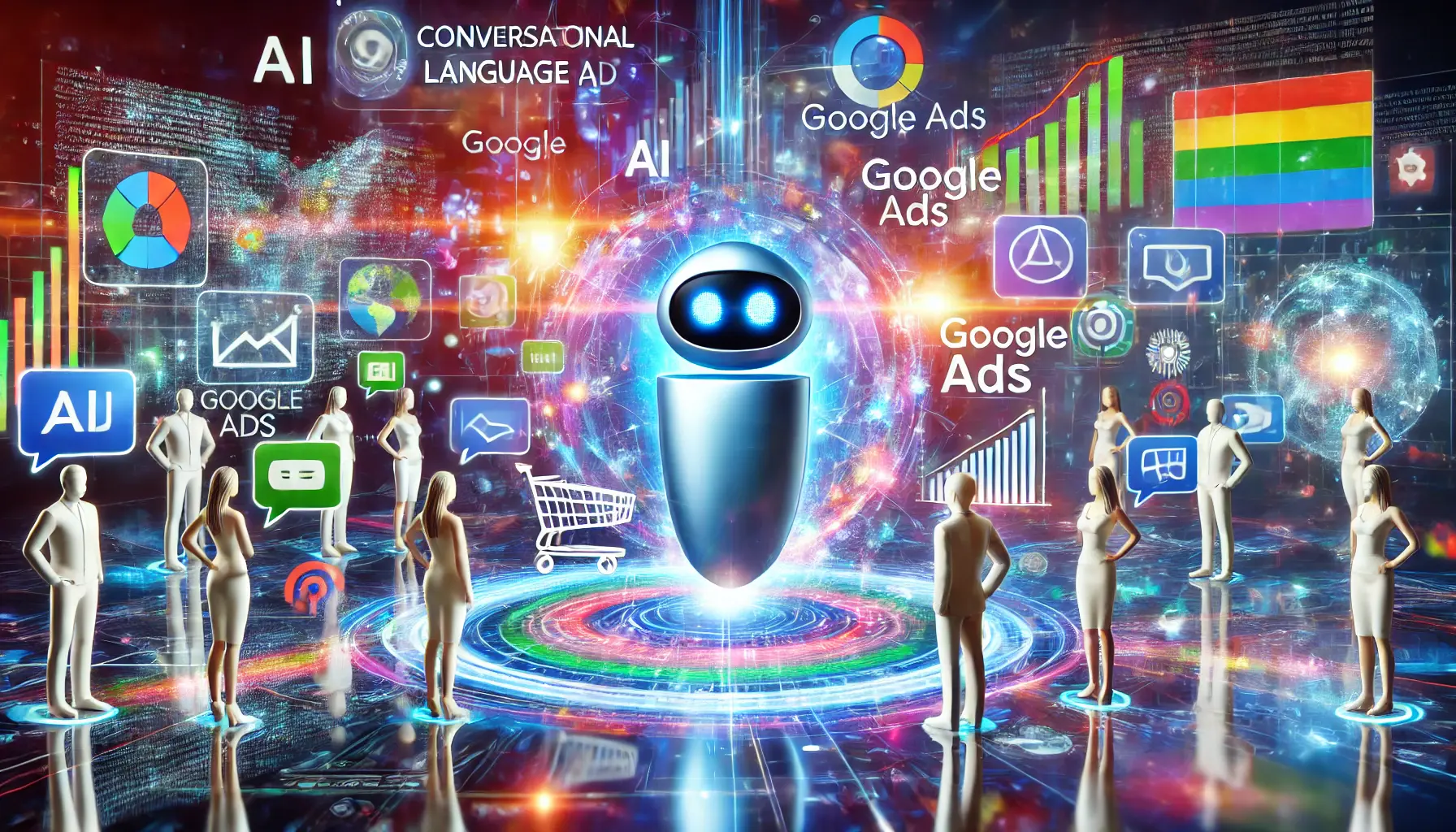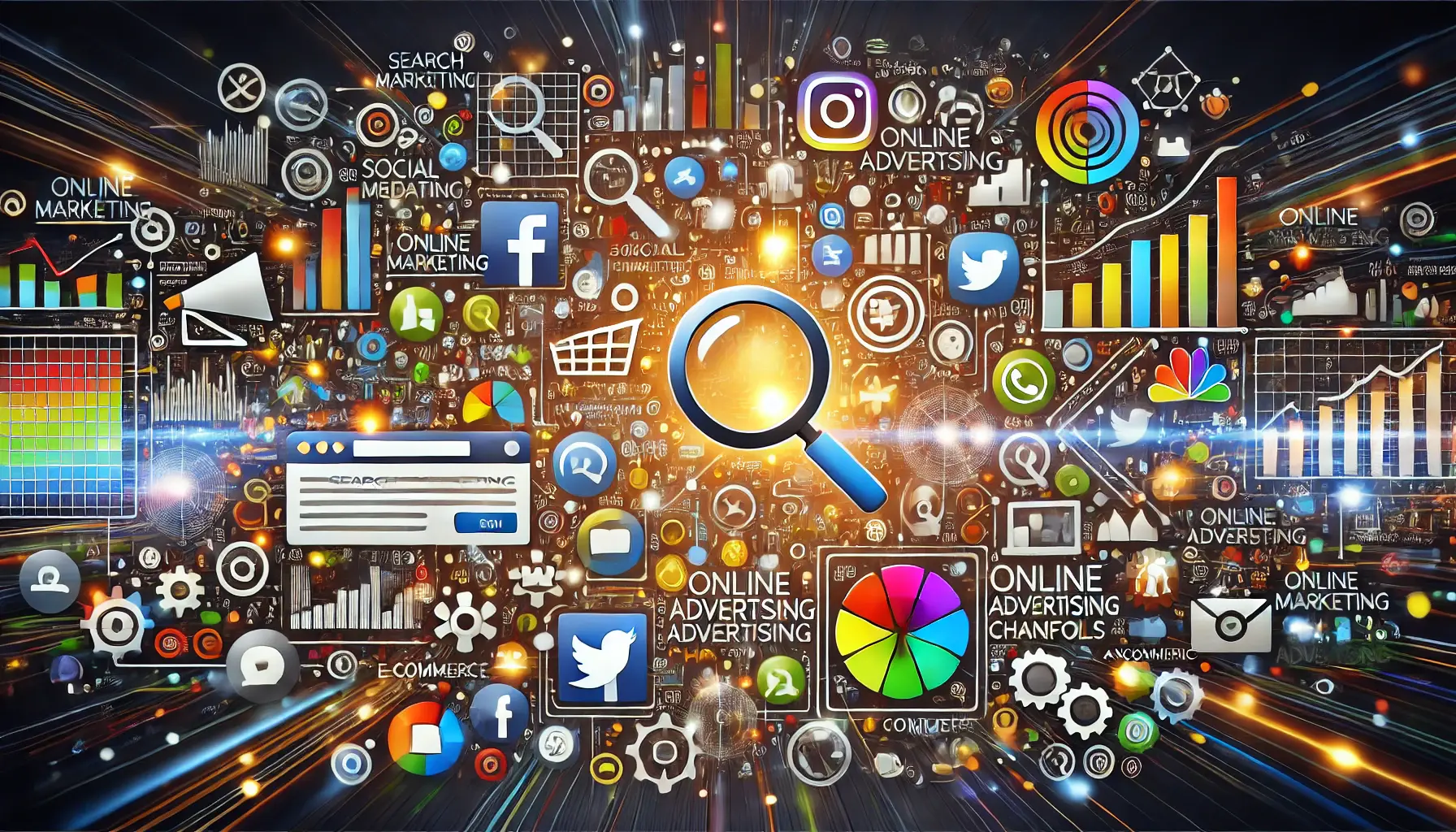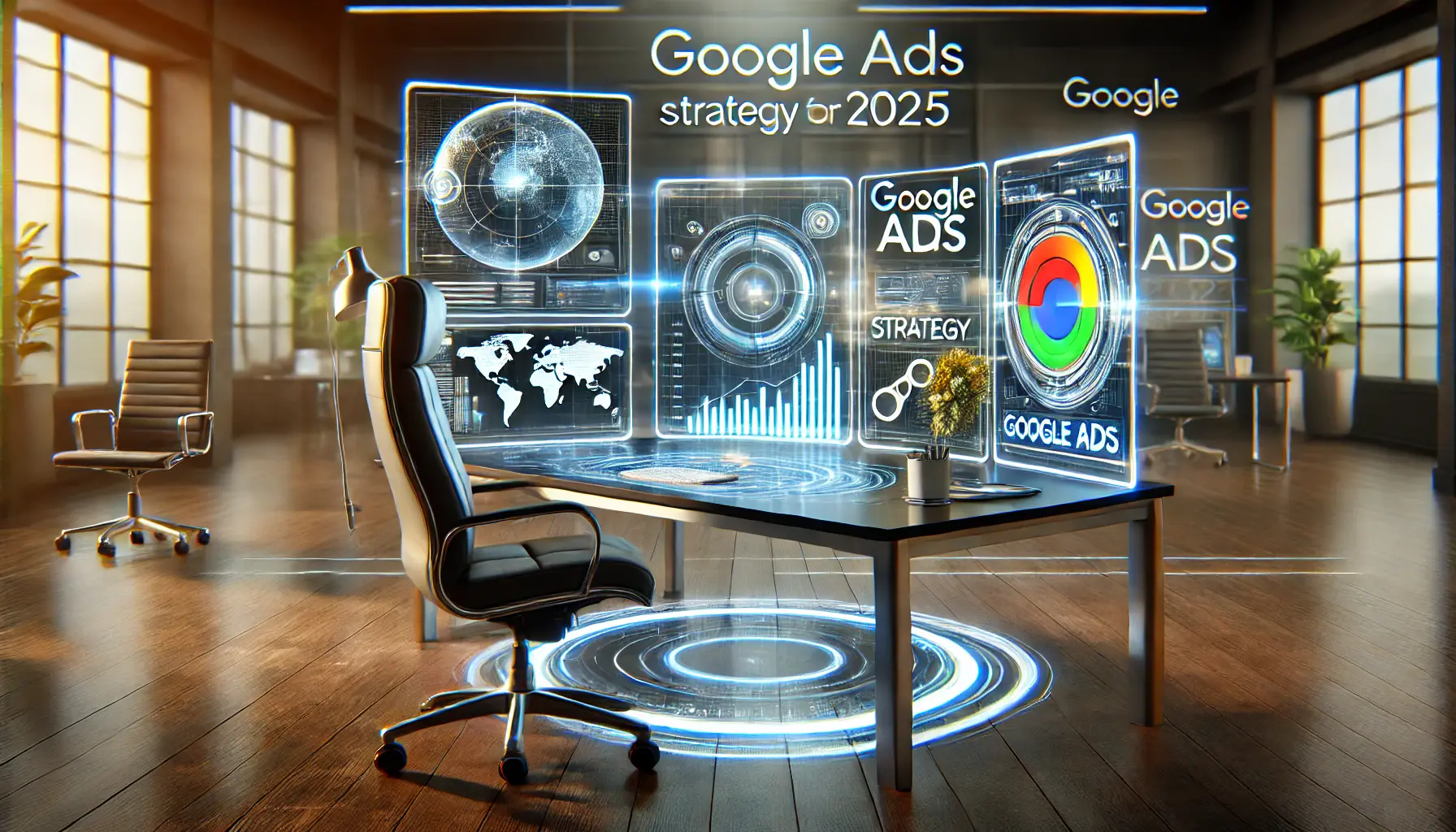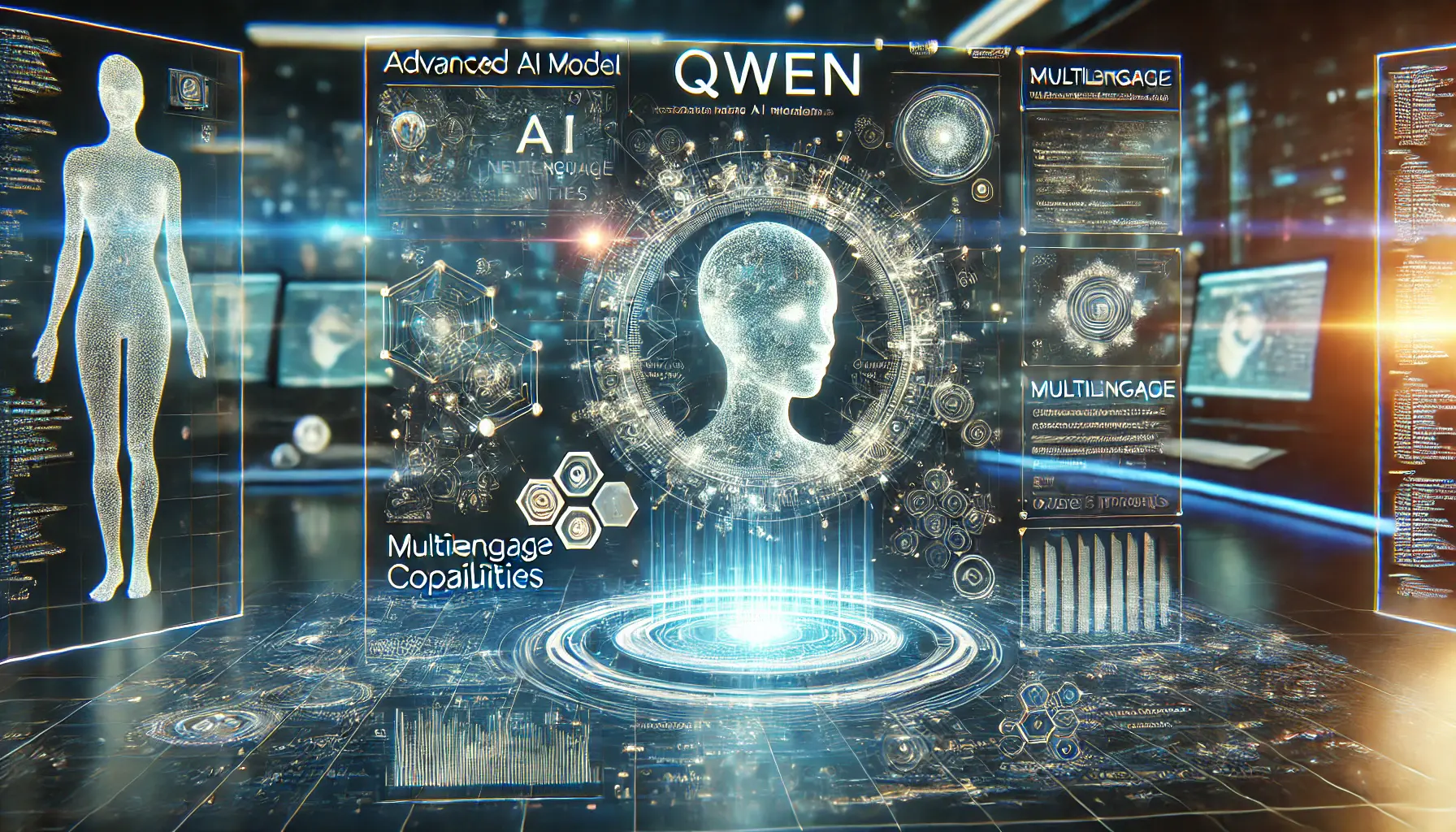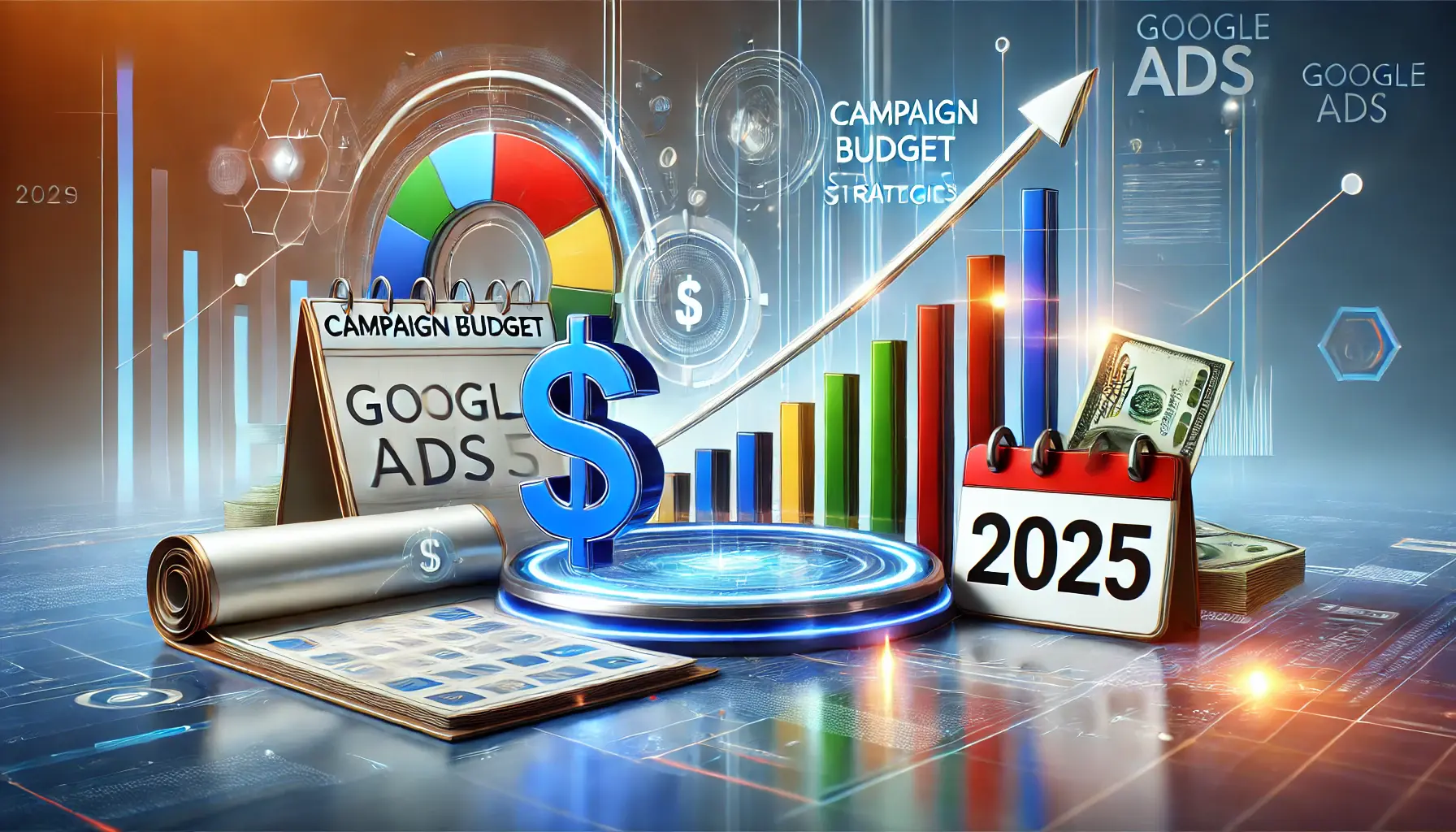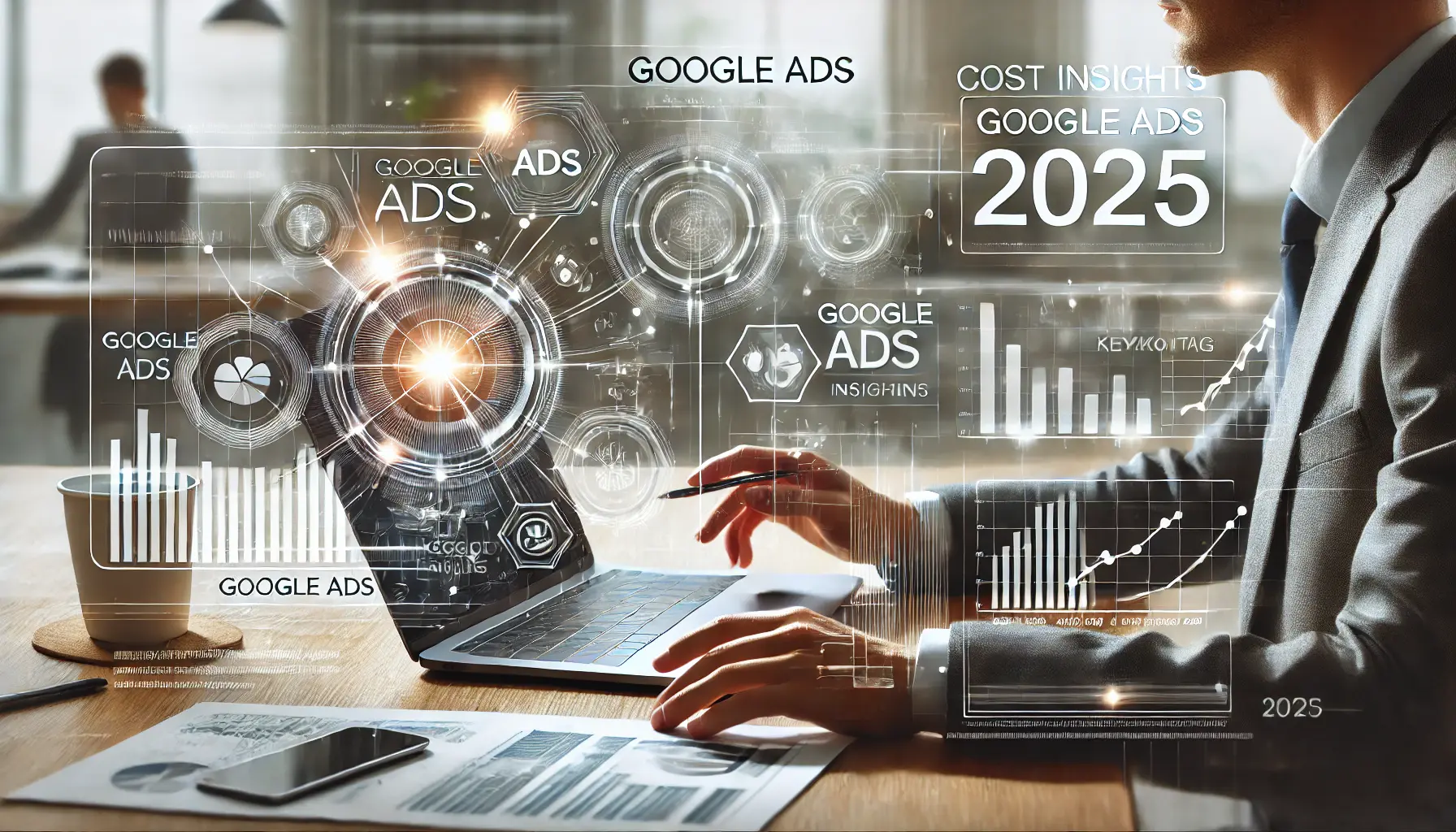In the dynamically developing digital ecosystem of today, natural-language conversational AIA technology that enables machines to process and respond in human-like natural language. included in Google Ads is revolutionizing how businesses connect with their audiences.
This technology lets advertisers build intuitive ad campaigns that enhance user engagement and deliver strategic value.
Let’s delve into the significance of this advancement and its impact on the advertising industry.
- Introduction to Natural-Language Conversational AI in Google Ads
- Implementing Conversational AI in Google Ads Campaigns
- Enhancing Ad Performance with AI-Driven Insights
- Challenges and Considerations in Using Conversational AI
- Future Trends in Conversational AI for Google Ads
- Summarizing the Impact of Natural-Language Conversational AI in Google Ads
- Frequently Asked Questions about Natural-Language Conversational AI in Google Ads
Introduction to Natural-Language Conversational AI in Google Ads
Natural-language conversational AI refers to the capability of machines to understand and process human language in a way that mimics natural conversation.
By integrating it into Google Ads, this means an advertiser can ‘talk’ with the platform in simple terms, making campaign construction accessible for users of any skill level.
Google Ads’ development with AI did not happen overnight.
Initially, advertisers relied on intuition and limited data to manage their campaigns.
With the introduction of AI and machine learning algorithms, the platform has evolved into a more efficient and effective tool for digital advertising.
This evolution enables smarter, faster, and more impactful ad management, allowing businesses to reach their target audiences with greater precision.
The role of natural language processing in advertising cannot be overstated.
By understanding the context and nuances of human language, AI-driven systems can create personalized and relevant ad content for users.
This leads to higher engagement rates and superior campaign performance, as ads are tailored to meet specific audience needs and interests.
Imagine telling Google Ads, in plain language, what your business goals are and having it build optimized campaigns on your behalf.
This is the power of natural-language conversational AI: it streamlines the advertising process, reduces the learning curve, and allows you to focus on what matters most—engaging with your customers.
As we delve deeper into this subject, consider how this technology might revolutionize your approach to digital advertising.
How might it change the way you create and manage your campaigns?
What new opportunities could it unlock for engaging with your audience?
Natural-language conversational AI simplifies campaign creation, making it accessible for all skill levels while driving higher engagement through tailored ad content.
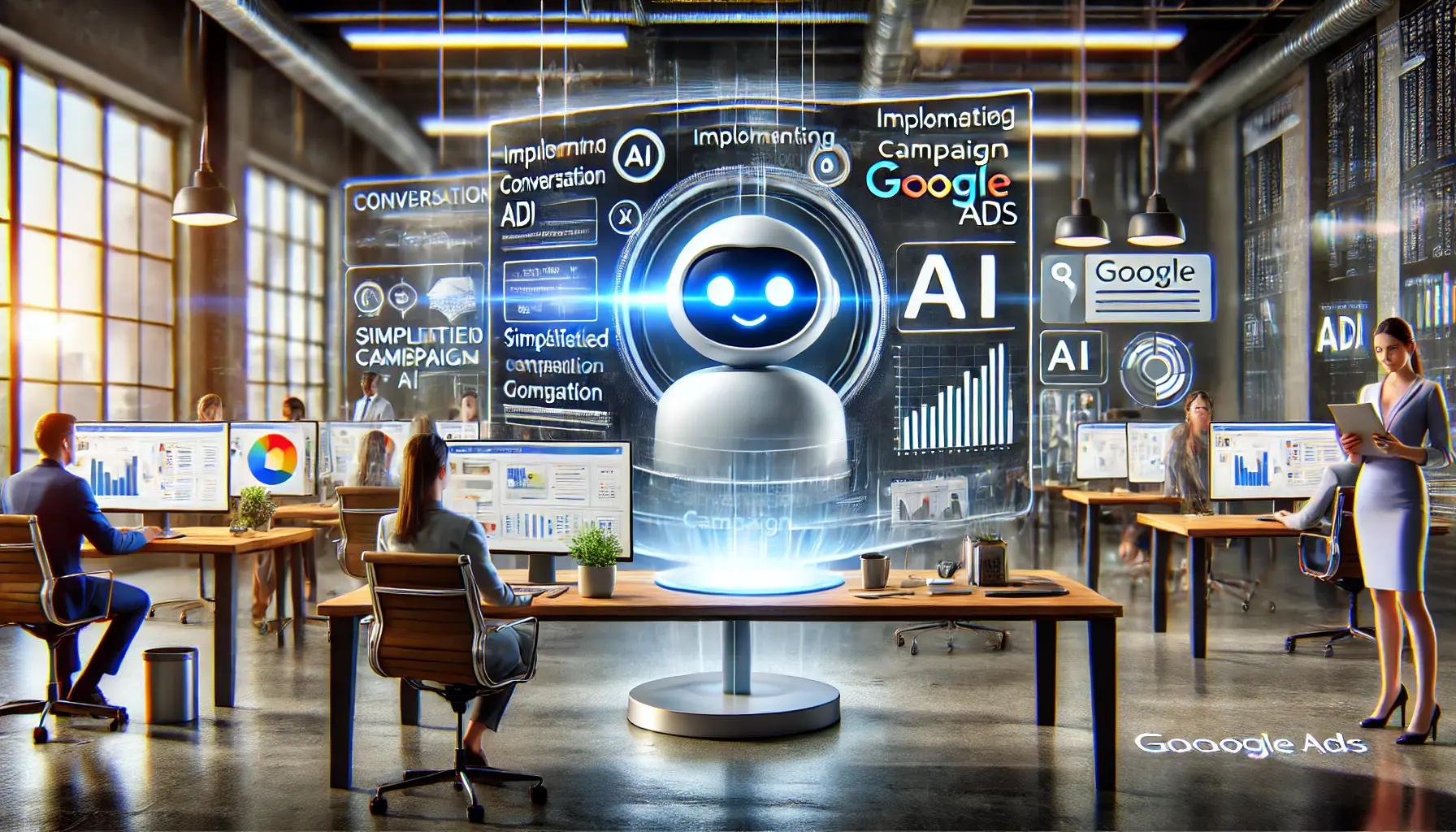
Illustrating the seamless integration of conversational AI in Google Ads campaign management.
Implementing Conversational AI in Google Ads Campaigns
Integrating natural-language conversational AI into your Google Ads campaigns can significantly enhance your advertising efforts.
This technology streamlines campaign creation and optimization, making it more efficient and effective.

A modern depiction of setting up AI-powered campaigns in Google Ads with an intuitive interface.
Setting Up AI-Powered Campaigns
To begin, access the conversational experience in Google Ads.
This feature allows you to interact with the platform using everyday language, simplifying the setup process.
Here’s how to get started:
- Access the Conversational Experience: Log in to your Google Ads account, head to the campaign creation section, and look for the option to use the conversational experience—a chat-based interface for setting up campaigns.
- Provide Your Website URL: When prompted, provide your website URL. Google AI will analyze your website to generate relevant keywords, headlines, and descriptions for your business.
- Review and Customize Suggestions: The AI will present a list of suggested keywords and ad creatives. Review these suggestions carefully, making adjustments to ensure they align with your campaign goals and brand voice.
- Finalize and Launch: Once satisfied with the AI-generated content, finalize your campaign settings, such as budget and targeting parameters, and launch your AI-powered campaign.
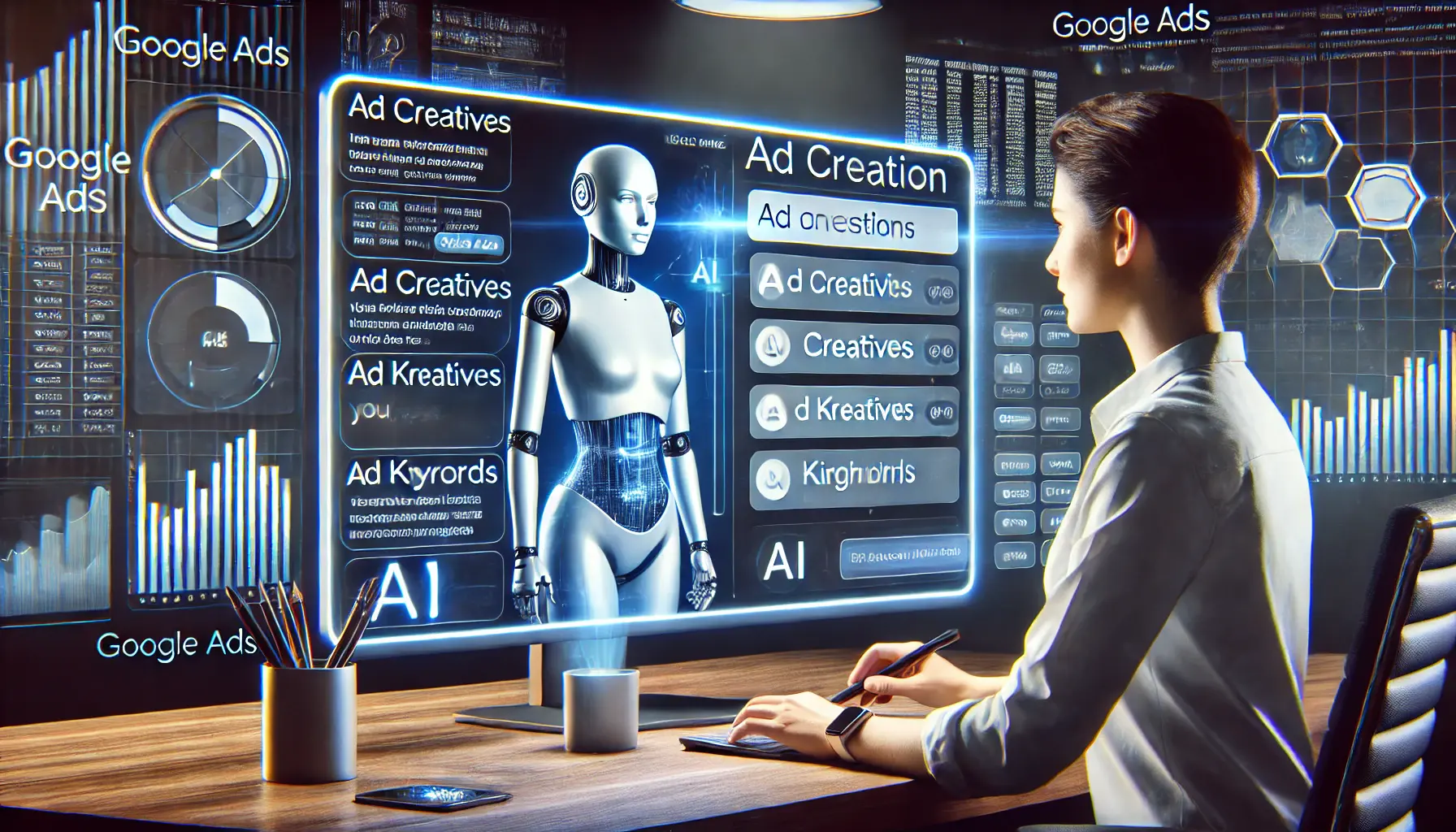
Leveraging conversational AI interfaces to simplify ad creation in Google Ads.
Utilizing Conversational Interfaces for Ad Creation
The conversational interface in Google Ads leverages AI to assist in creating compelling ad content.
By engaging in a natural language dialogue with the platform, you can create ads that resonate with your target audience.
This approach reduces the complexity of manual ad creation and allows for more dynamic and responsive campaign management.

Showcasing best practices for successful AI integration in digital advertising campaigns.
Best Practices for Effective AI Integration
To maximize the benefits of conversational AI in your campaigns, consider the following best practices:
- Clearly Define Your Goals: Before utilizing AI, establish clear objectives for your campaign, such as increasing brand awareness, driving website traffic, or generating leads. This clarity will help the AI optimize your campaign effectively.
- Provide High-Quality Data: Ensure your website and landing pages are well-optimized and contain relevant information. High-quality data enables the AI to generate more accurate and effective ad content.
- Monitor Performance Regularly: While AI automates many aspects of campaign management, it’s essential to monitor performance metrics regularly. Analyze the data to identify areas for improvement and make necessary adjustments.
- Combine AI with Human Expertise: Leverage AI for efficiency, but not at the expense of human insight. Use your industry knowledge to guide the AI’s suggestions and make strategic decisions that align with your brand’s unique needs.
By following these steps and best practices, you can effectively implement conversational AI in your Google Ads campaigns, leading to improved performance and a more streamlined advertising process.
Follow best practices like defining goals, providing high-quality data, and monitoring performance to ensure successful integration of conversational AI into campaigns.
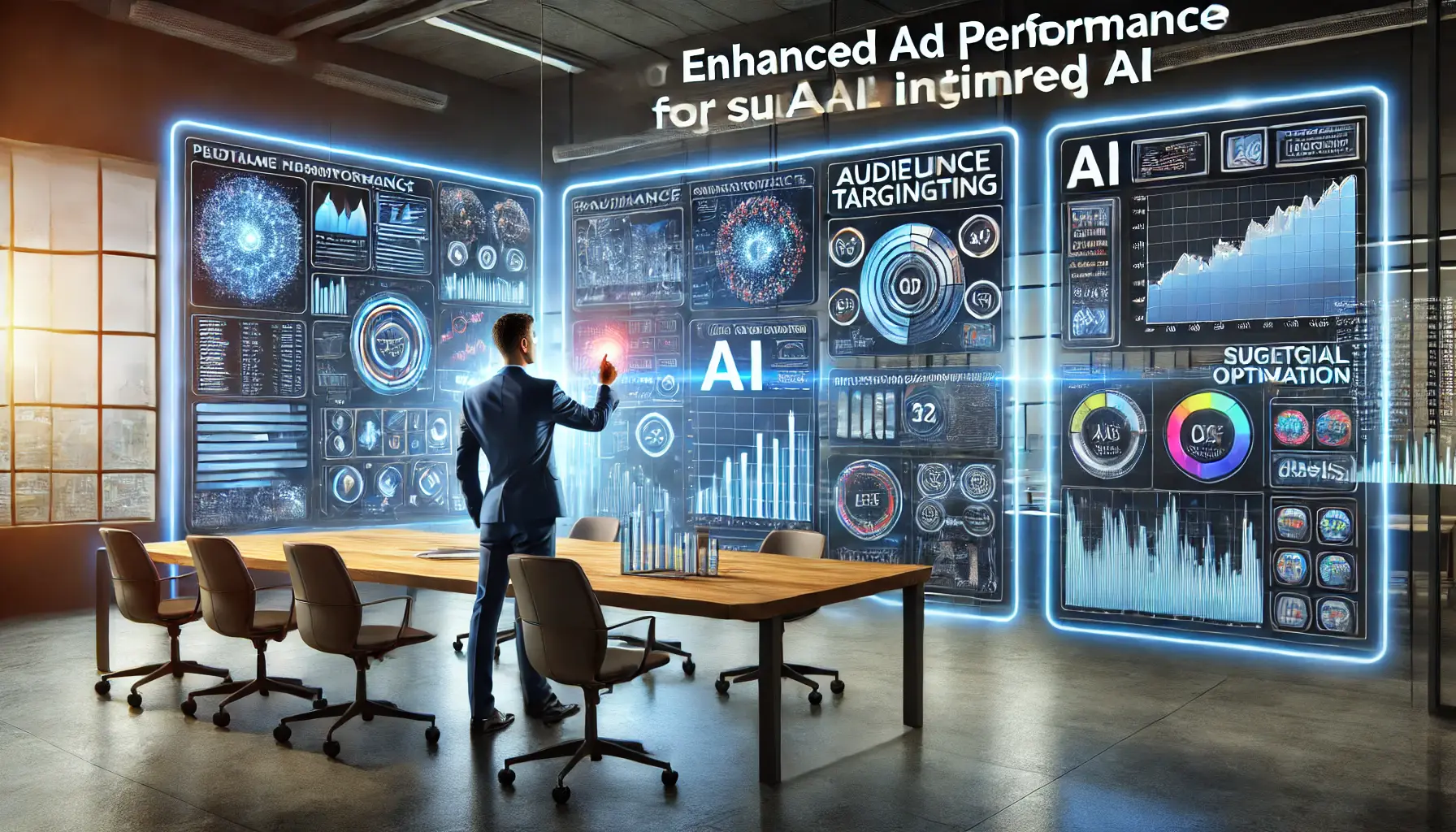
Illustrating the role of AI-driven insights in optimizing ad performance and targeting precision.
Enhancing Ad Performance with AI-Driven Insights
Leveraging AI-driven insights in your Google Ads campaigns can significantly boost performance by enabling more precise audience targeting and optimized ad content.
This approach utilizes advanced algorithms to analyze vast amounts of data, providing actionable recommendations for your advertising strategy.
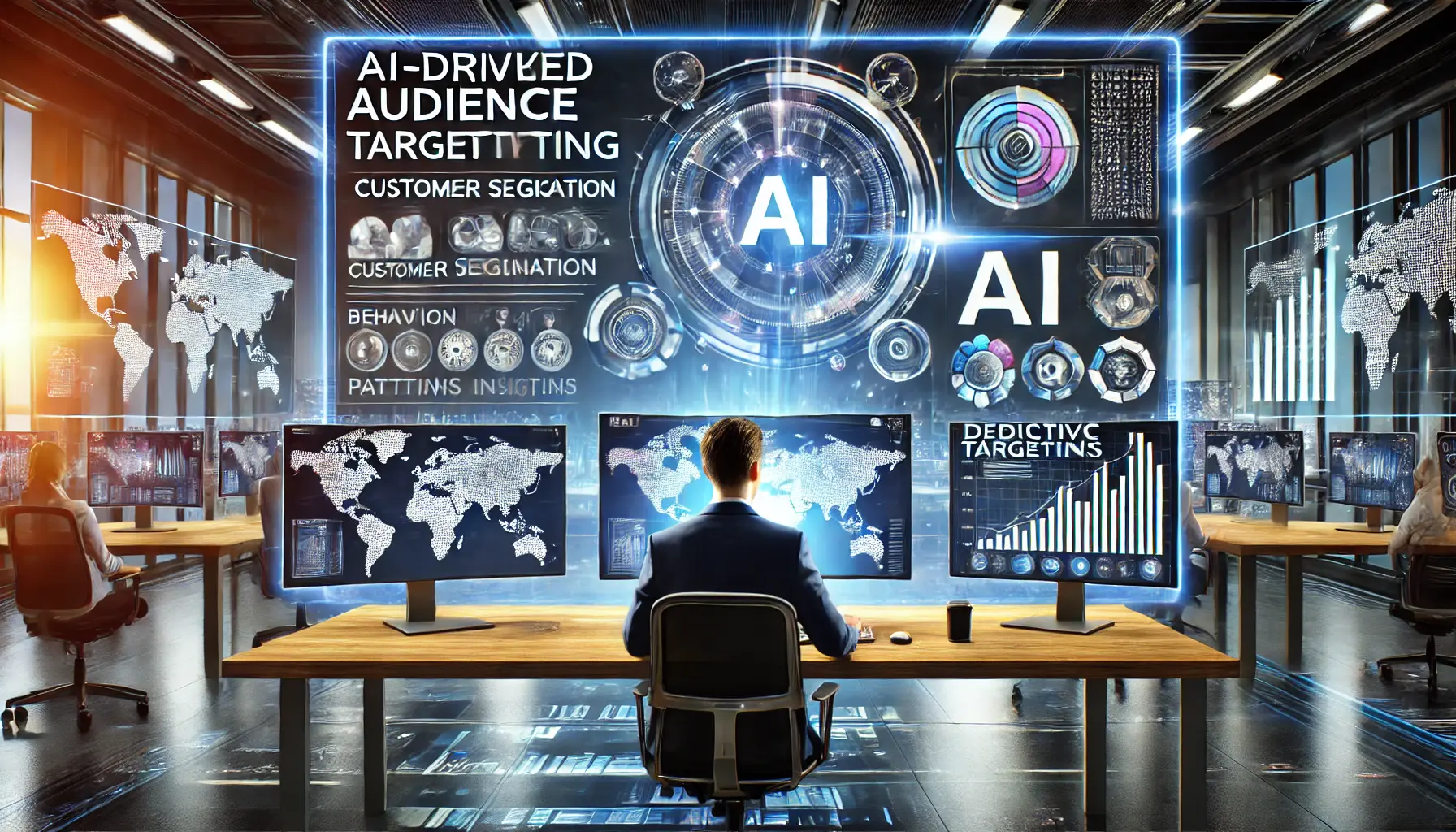
Showcasing the precision of AI-driven audience targeting for optimized advertising campaigns.
Leveraging AI for Audience Targeting
AI enhances audience targeting by identifying patterns and behaviors within your customer base.
By analyzing user interactions, search histories, and demographic information, AI can help you:
- Find High-Value Segments: Determine which audience segments are most likely to convert, ensuring the best use of your budget.
- Predict User Behavior: Anticipate potential customers’ next actions, enabling proactive engagement strategies.
- Deliver Personalized Ads: Serve more relevant ads tailored to individual preferences, improving user experience and campaign performance.
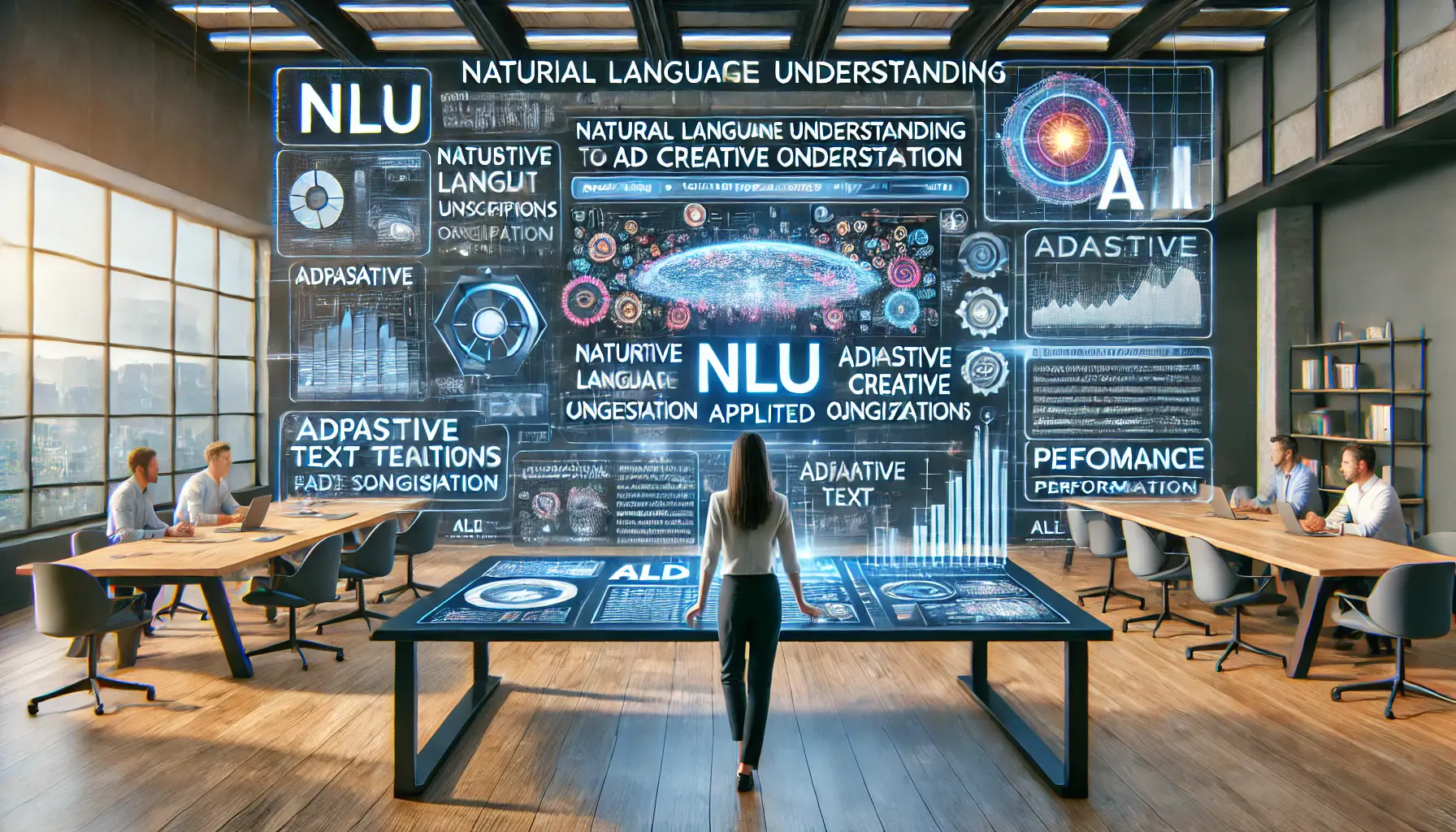
Leveraging natural language understanding for creating optimized and impactful ad content.
Natural Language Understanding for Better Ad Creative Optimization
Natural language understanding (NLUShort for Natural Language Understanding, a subset of AI that focuses on understanding text or speech input in human language.) enables AI to comprehend and produce text similarly to a human, significantly improving ad content creation.
By applying NLU, you can:
- Create Attention-Grabbing Headlines: Develop headlines that resonate with your target audience.
- Produce Relevant Ad Descriptions: Align ad descriptions with user intent and search queries.
- Enhance Ad Quality: Improve the relevance and effectiveness of your ads, leading to better placement and reduced costs.
Google’s conversational experience in Google Ads helps you build Search campaigns that achieve better performance with less effort, using AI to generate optimized headlines and descriptions.

Illustrating the impact of AI integration through successful advertising campaign case studies.
AI Integration Success Stories
Here are some businesses that have integrated AI into their Google Ads campaigns and achieved remarkable results:
- L’Oréal Vietnam: L’Oréal improved its ROAS by 4.1X and its conversion rate by 13X compared to previous campaigns using Performance Max.
- tails.com: Powered by AI-driven Search ads, tails.com increased signups by 182% and clicks by 258% in their generic campaigns.
- Rindchen’s Weinkontor: This wine retailer used AI-created personas to improve campaign performance and enhance customer engagement with their brand’s ads.
These case studies highlight the transformative potential of AI-driven insights in reshaping advertising strategies, leading to superior performance and greater value.
AI-driven insights enable precise audience targeting and optimized ad creatives, leading to improved engagement and better ROI.
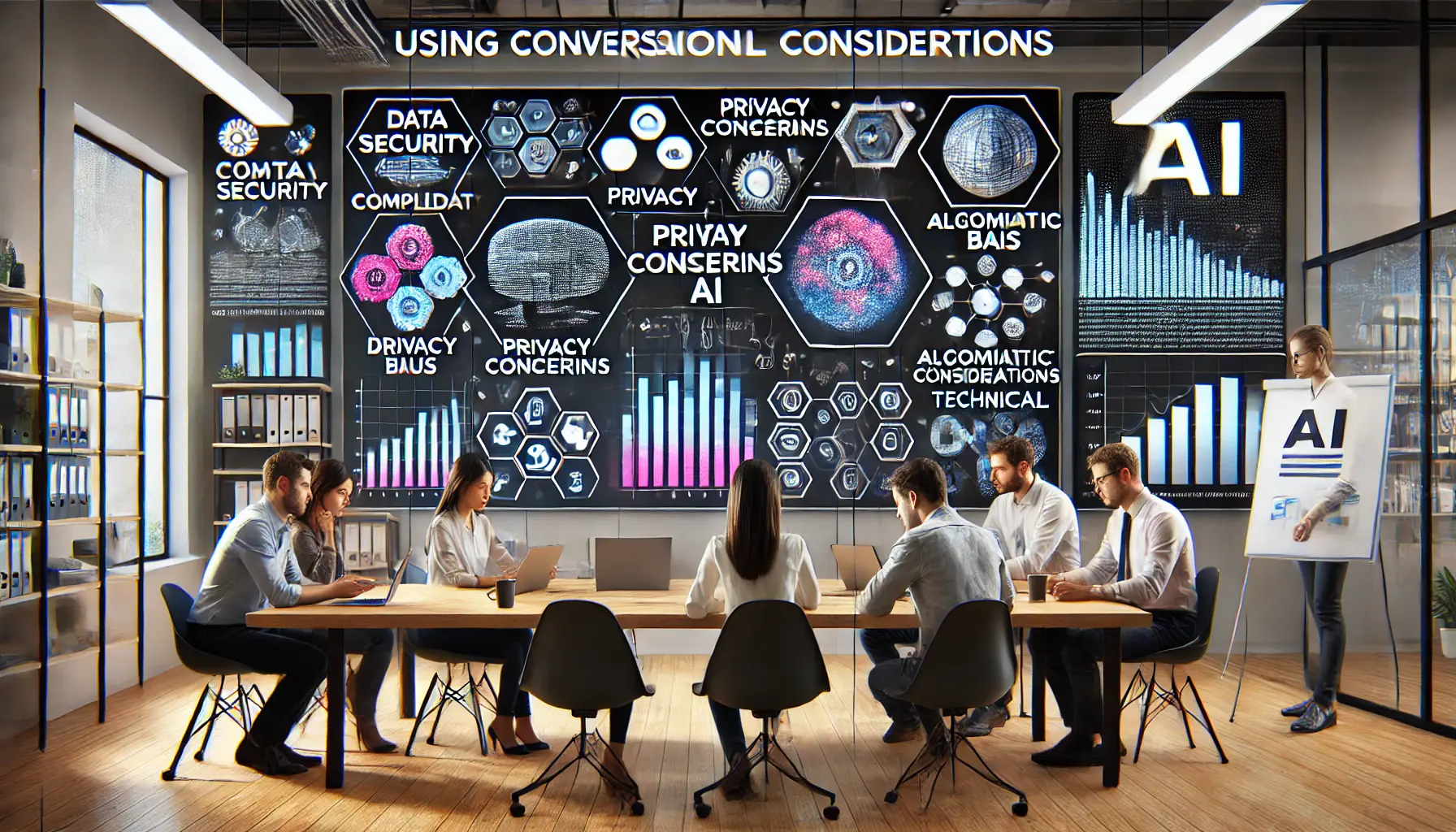
Highlighting the challenges and ethical considerations of integrating conversational AI in digital marketing.
Challenges and Considerations in Using Conversational AI
Implementing natural-language conversational AI in Google Ads offers numerous benefits, but it also presents certain challenges and considerations that advertisers must address to ensure effective and ethical use.

Focusing on the importance of privacy in AI-driven advertising campaigns.
Addressing Privacy Concerns
Utilizing conversational AI involves collecting and analyzing user data to personalize ad experiences.
This raises significant privacy concerns, as users may be unaware of the extent to which their data is being used.
To address these concerns:
- Data Transparency: Clearly inform users about the data being collected and how it will be used in your advertising campaigns.
- Consent Management: Obtain explicit consent from users before collecting their data, ensuring compliance with data protection regulations.
- Data Security: Implement robust security measures to protect user data from unauthorized access or breaches.
By prioritizing user privacy, you can build trust and foster positive relationships with your audience.

Focusing on the importance of ethical AI practices in digital advertising.
Ensuring Ethical AI Usage in Advertising
The integration of AI in advertising introduces ethical considerations that must be carefully managed to maintain consumer trust and brand integrity.
Key ethical challenges include:
- Algorithmic Bias: AI systems can unknowingly perpetuate biases contained in the data used for their training, creating unfair targeting or exclusion of certain groups. Regularly auditing and updating the AI models can help mitigate bias.
- Manipulative Practices: Avoid using AI to exploit consumer vulnerabilities or manipulate decision-making processes. Ensure your advertising strategies are transparent and respect consumer autonomy.
- Intellectual Property Concerns: Be mindful of copyright implications when using AI-generated content, ensuring that it does not infringe on existing creative works.
Adhering to ethical guidelines not only safeguards your brand’s reputation but also contributes to the responsible advancement of AI technologies in marketing.

Addressing and overcoming technical challenges in AI integration for advertising.
Overcoming Technical Limitations
While conversational AI has advanced significantly, technical limitations can still pose challenges in its implementation:
- Natural Language Understanding: AI may struggle with understanding context, slang, or cultural nuances, leading to misinterpretations. Continuously train your AI models with diverse data to enhance language comprehension.
- Integration with Existing Systems: The integration of AI into existing advertising infrastructure is complex and requires collaboration with experienced AI vendors to ensure seamless operation.
- Cost Implications: Setting up and maintaining an AI system can be expensive. Assess the cost-benefit ratio to determine whether it is viable for your business.
By preempting these technical issues, you can ensure that conversational AI works effectively for your advertising activities.
In conclusion, while conversational AI promises great opportunities for enhancing Google Ads, it is essential to address privacy concerns, ethical challenges, and technical limitations thoughtfully.
Doing so will unlock AI’s potential for creating more engaging, responsible, and impactful advertising strategies.
Address ethical concerns like data privacy and algorithmic bias to build trust and ensure responsible AI usage in advertising.
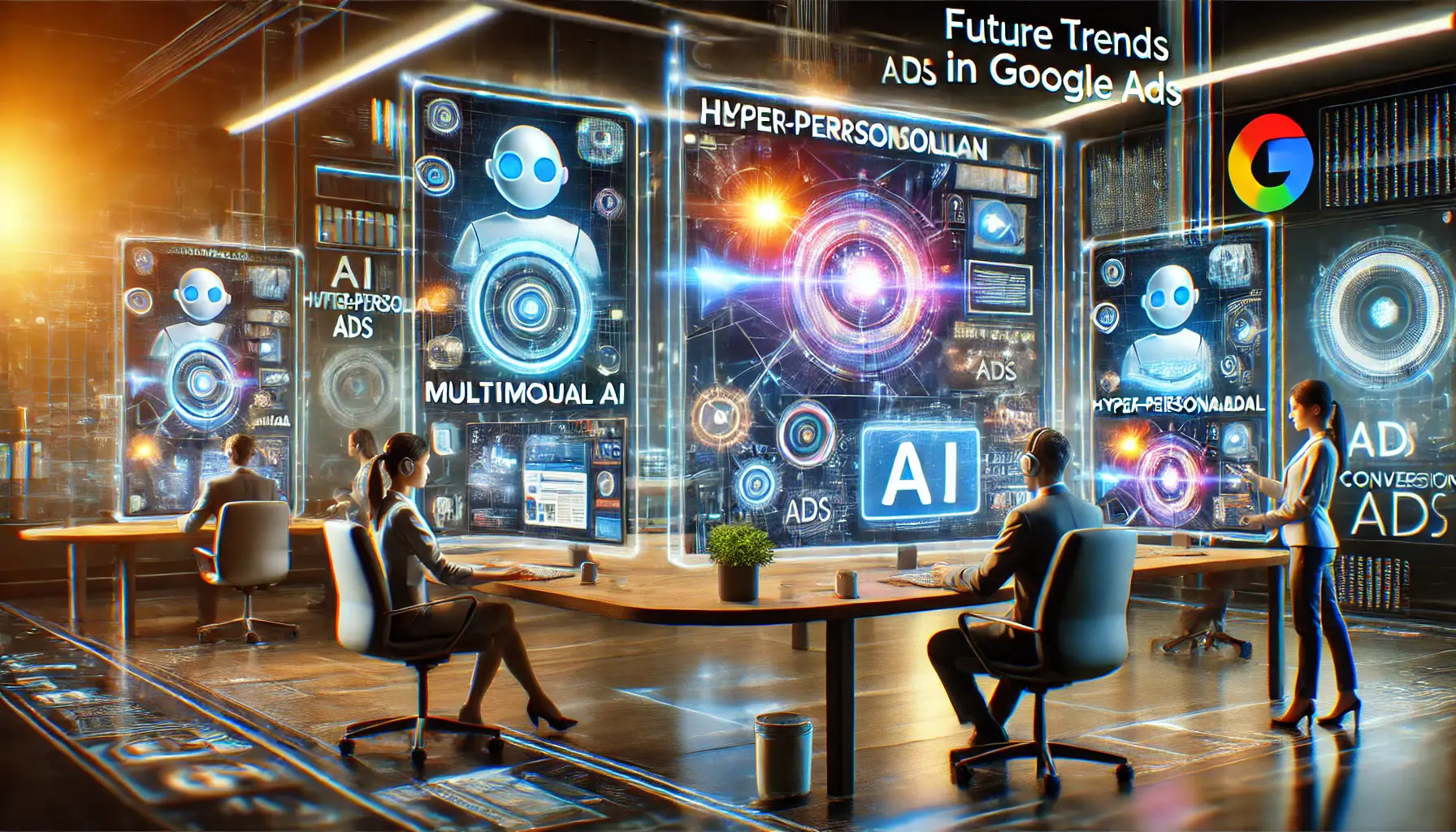
Exploring the future trends of conversational AI in Google Ads, highlighting emerging technologies and automation.
Future Trends in Conversational AI for Google Ads
Looking ahead, the integration of natural-language conversational AI into Google Ads is set to revolutionize digital marketing strategies.
Staying informed about emerging trends will better equip advertisers to harness this powerful technology effectively.

Illustrating the role of AI in automating campaign management and optimizing marketing strategies.
AI-Powered Automation and Campaign Management
The future of Google Ads is increasingly automated, with AI simplifying campaign management.
Performance Max campaigns take this a step further by using AI to allocate budgets across different networks, enhancing efficiency and performance.

Showcasing the role of AI in hyper-personalizing ad content for improved engagement.
Hyper-Personalization of Ad Content
Advances in AI enable hyper-personalization of customer experiences.
By analyzing user data, AI can create personalized ads tailored to individuals, increasing engagement and driving higher conversion rates.

Illustrating the integration of multimodal AI to enhance ad targeting and personalization.
Integration of Multimodal AI
With the rise of multimodal AIArtificial intelligence that can process and integrate multiple types of data such as text, images, audio, and video.—capable of processing text, images, audio, and video—interactions will become more intuitive, and the accuracy of AI outputs will improve significantly.
This development will enhance the effectiveness of conversational AI in advertising.

Emphasizing enhanced privacy and data security measures in AI-powered digital marketing.
Enhanced User Privacy and Data Security Measures
As concerns over data privacy continue to grow, future AI integrations will prioritize user consent and data protection.
Advertisers will need to adopt transparent data practices to maintain consumer trust and comply with evolving regulations.

Showcasing the role of AI agents in transforming digital marketing workflows.
AI Agents in Marketing
AI agents, a type of intelligent software system that processes multimodal information, will become indispensable in managing complex marketing workflows.
These agents will simplify data integration and enhance decision-making processes, making them a vital tool for marketers.
By keeping up with these trends, advertisers can fully leverage the capabilities of natural-language conversational AI in Google Ads to create more effective, engaging campaigns in an ever-evolving digital landscape.
Emerging trends like hyper-personalization, multimodal AI, and enhanced privacy measures will shape the future of conversational AI in digital advertising.
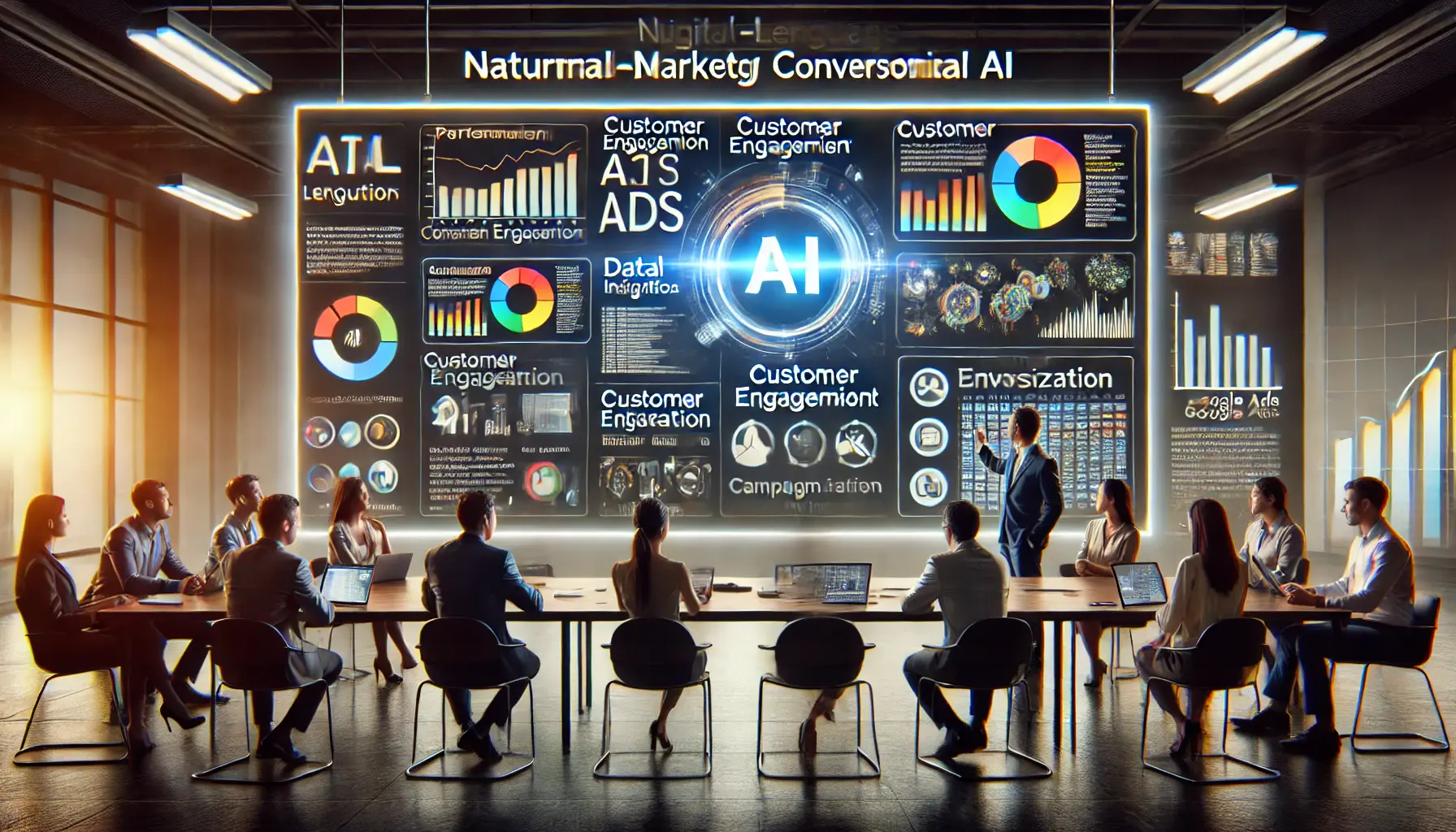
Summarizing the transformative effects of natural-language conversational AI in Google Ads.
Summarizing the Impact of Natural-Language Conversational AI in Google Ads
The integration of natural-language conversational AI in Google Ads represents a transformative shift in the digital advertising landscape.
By streamlining campaign management, enhancing ad personalization, and providing deeper insights, this technology empowers advertisers to achieve unprecedented levels of engagement and performance.

Visualizing the key takeaways from digital marketing campaigns and AI-driven insights.
Key Takeaways
Throughout this article, we explored how conversational AI is revolutionizing advertising strategies.
Here are the key points to remember:
- Improved Campaign Efficiency: AI-powered tools like Performance Max enable advertisers to allocate budgets and optimize campaigns seamlessly.
- Enhanced Personalization: By leveraging user data, AI creates tailored ad content that resonates with individual preferences and drives conversions.
- Addressing Ethical and Privacy Concerns: Transparency, consent management, and robust data security practices are critical to maintaining consumer trust.
- Overcoming Technical Challenges: By addressing limitations such as language understanding and integration complexities, advertisers can maximize the potential of conversational AI.
- Embracing Future Trends: Staying informed about advancements like multimodal AI and intelligent agents will help advertisers remain competitive in the evolving landscape.

Emphasizing the importance of conversational AI in transforming digital marketing outcomes.
Why It Matters
Natural-language conversational AI not only simplifies the complexities of digital advertising but also unlocks new opportunities for creativity and innovation.
Advertisers can now focus more on strategic decision-making and less on manual tasks, allowing them to deliver impactful campaigns that connect meaningfully with their audiences.

Visualizing the path forward for AI-driven advertising and the future of conversational AI in marketing.
The Path Forward
As the technology continues to evolve, its adoption will become increasingly essential for businesses seeking to maintain a competitive edge.
Responsible use of AI-driven tools can empower advertisers to deploy natural-language conversational AI in Google Ads, unlocking its full potential.
In conclusion, the future of digital advertising belongs to this transformational technology.
Whether improving efficiency, enhancing personalization, or addressing ethical considerations, natural-language conversational AI will redefine how advertisers connect with their audiences and achieve their objectives.
Conversational AI is revolutionizing advertising by simplifying campaign management, enhancing personalization, and addressing technical and ethical challenges.
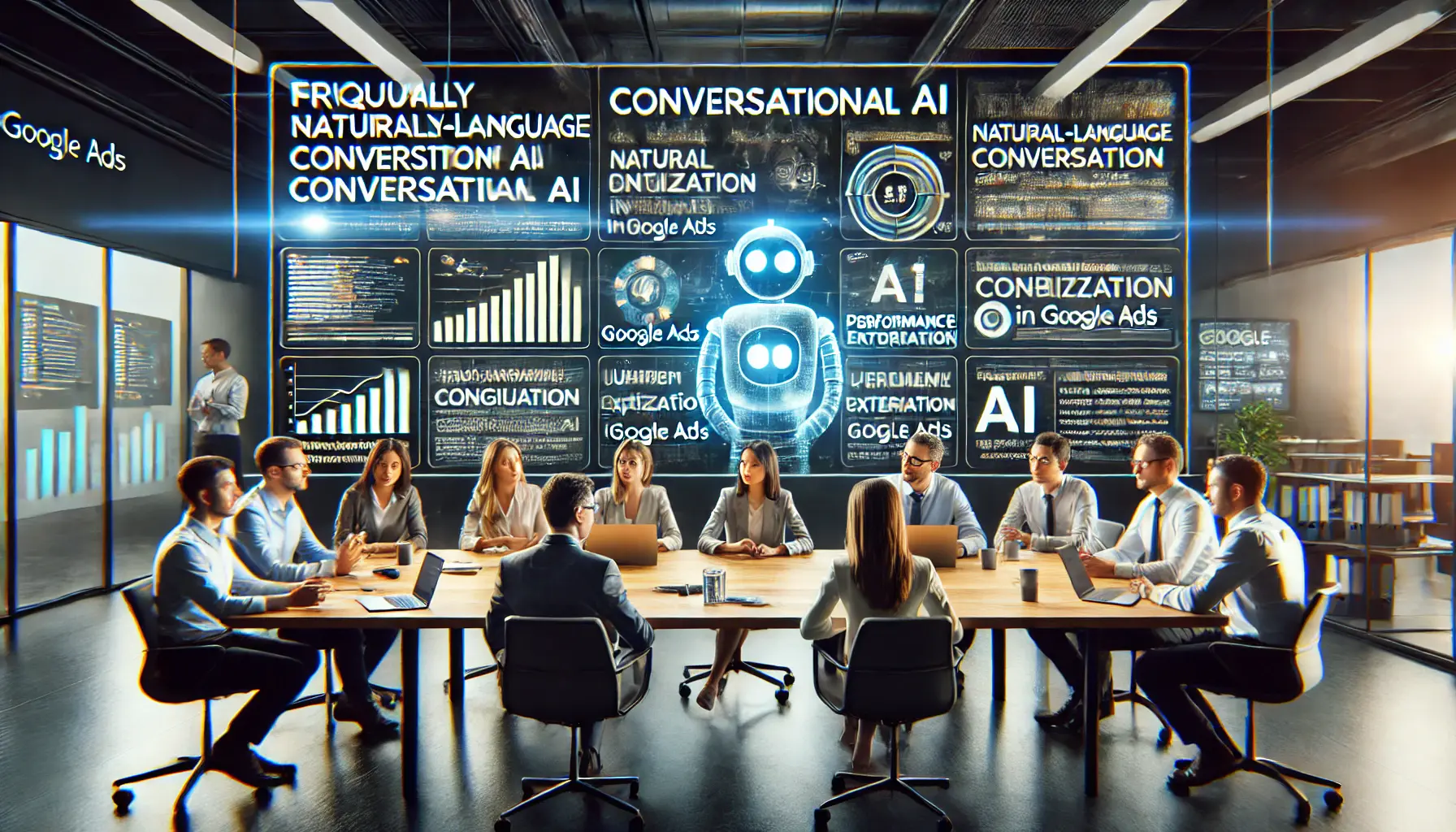
A team of experts addressing key questions on conversational AI in Google Ads.
Your campaigns can be managed by an agency specialized in Google Ads, check out our service page.
Frequently Asked Questions about Natural-Language Conversational AI in Google Ads
As the integration of natural-language conversational AI into Google Ads evolves, advertisers often have questions about its functionality and benefits.
Here are some common inquiries:
It’s a chat-based feature that combines your expertise with Google AI to streamline Search campaign creation.
AI analyzes your website URL to generate relevant keywords, headlines, descriptions, and images for the campaign, making the process efficient and intuitive.
Yes, you can review and edit all AI-generated suggestions to ensure they align with your campaign goals and brand voice.
Currently, it’s available in English, with plans to expand to additional languages in the future.
AI fits ad content to user intent, enhancing engagement and conversion rates by creating contextually relevant advertisements.
These are AI-generated headlines and descriptions tailored to your ad’s context, such as its landing page or existing ads, to enhance relevance and performance.
Advertisers must implement transparent data practices, obtain user consent, and ensure robust data security to maintain consumer trust.
Conversational AI simplifies campaign creation, amplifies ad relevance, and unlocks better performance by leveraging AI-driven insights.
Log in to Google Ads, navigate to the campaign creation section, and select the conversational experience option.
